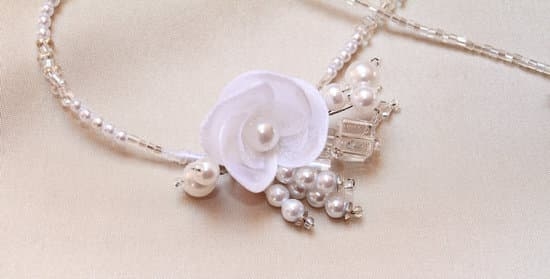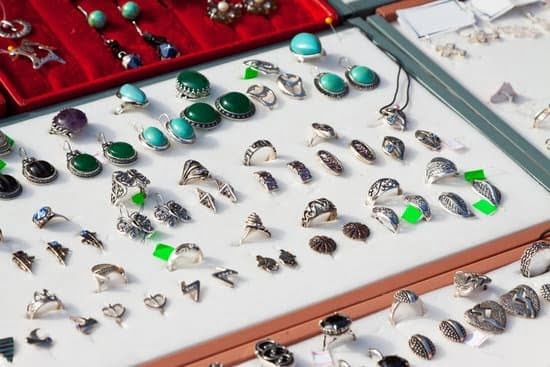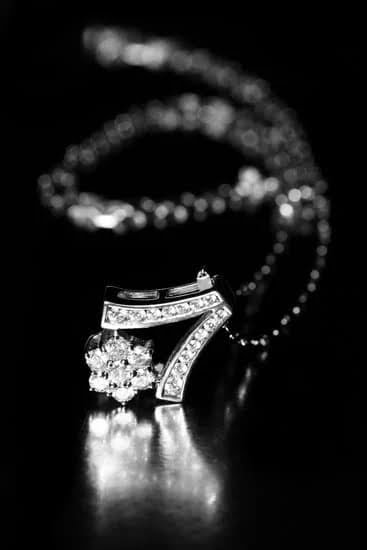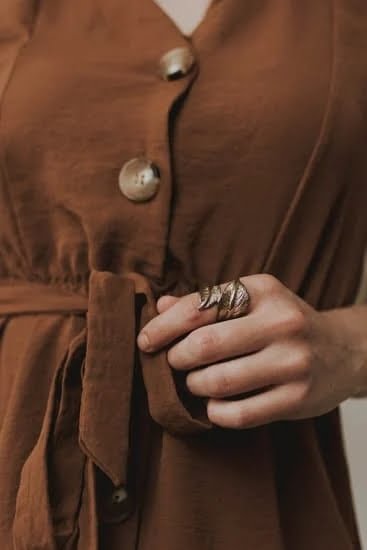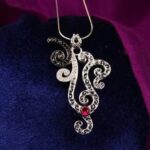Diamond sterling silver jewelry is prized for its exquisite beauty and elegance. To ensure that it retains its sparkle and shine, regular cleaning is essential. However, many traditional cleaning methods involve the use of white vinegar, which may not be suitable for everyone. In this article, we will explore alternative approaches to clean diamond sterling silver jewelry without white vinegar.
Cleaning diamond sterling silver jewelry regularly is crucial to preserve its value and beauty. Over time, dirt, oils, and other substances can accumulate on the surface of the jewelry, dulling its luster. By cleaning it regularly, you can remove these impurities and restore its brilliance.
Traditionally, white vinegar has been a popular choice for cleaning silver jewelry due to its acidic properties. However, some individuals prefer not to use vinegar or may have allergies or sensitivities to it. Therefore, it is important to know alternative methods that are equally effective in restoring the shine of diamond sterling silver jewelry.
In the following sections of this article, we will delve into the properties of diamond sterling silver jewelry and discuss safe and effective cleaning supplies and tools that can be used without relying on white vinegar. Additionally, we will provide step-by-step instructions on how to clean your jewelry using these alternatives and share tips for extra care and maintenance to prevent tarnishing or other damages.
By following our recommendations and techniques, you can achieve pristine diamond sterling silver jewelry without relying on white vinegar or compromising its beauty and value. Let’s explore these alternative cleaning methods together.
Understanding the properties of diamond sterling silver jewelry
Diamond sterling silver jewelry is not just an ordinary accessory; it is a precious item that requires special care and attention. Understanding the properties of diamond sterling silver jewelry is crucial in ensuring its longevity and beauty.
Firstly, it is important to acknowledge that sterling silver jewelry consists of 92.5% pure silver and 7.5% other metals, usually copper, which provides strength and durability to the jewelry piece. The addition of alloys makes it more resistant to damage compared to pure silver. However, it also makes the jewelry prone to tarnishing.
The delicate nature of both sterling silver and diamonds requires gentle cleaning methods to prevent any damages. Harsh cleaning solutions or abrasive materials can scratch or dull the surface of the metal as well as chip or loosen diamonds from their settings. Therefore, it is essential to use appropriate cleaning supplies and tools for diamond sterling silver jewelry.
To effectively clean diamond sterling silver jewelry without white vinegar, mild dish soap combined with warm water works as a safe alternative. This combination helps remove dirt, oils, and other impurities without causing harm to the metal or stones. Additionally, using soft-bristled brushes specifically designed for jewelry can help gently scrub away any residue stuck in hard-to-reach areas.
A lint-free cloth should be used extensively throughout the cleaning process for drying and polishing purposes. These cloths are ideal because they do not leave behind any fibers that may catch on prongs or claws holding diamonds in place during drying. Using non-abrasive materials ensures that no scratches occur during polishing.
Understanding the properties of diamond sterling silver jewelry is vital for proper maintenance and care. By using gentle cleaning supplies and tools like mild dish soap, warm water, soft-bristled brushes, and lint-free cloths appropriately, you can preserve the beauty and value of your precious diamond sterling silver jewelry without relying on white vinegar.
Safe and effective cleaning supplies and tools for diamond sterling silver jewelry
Cleaning diamond sterling silver jewelry requires gentle yet effective supplies and tools that do not involve the use of white vinegar. Here is a comprehensive list of items you can use to safely clean your precious pieces:
- Mild dish soap: Using a mild dish soap is an excellent alternative to white vinegar. Its gentle formula helps remove dirt and grime without causing any harm to your jewelry.
- Warm water: Combine warm water with the mild dish soap to create a gentle cleaning solution for your diamond sterling silver jewelry.
- Soft-bristled brushes: Opt for soft-bristled brushes such as toothbrushes or makeup brushes. These will help you clean those hard-to-reach areas without scratching the metal or gemstones.
- Lint-free cloths: Choose lint-free cloths made from microfiber or soft cotton. These materials are perfect for gently drying and polishing your jewelry.
Now that you have gathered the necessary supplies, it’s time to learn how to use them effectively in cleaning your diamond sterling silver jewelry without white vinegar.
First, fill a small bowl with warm water and add a few drops of mild dish soap. Gently stir the mixture until it forms suds. Next, place your jewelry in the soapy water and let it soak for about 5-10 minutes.
After soaking, take a soft-bristled brush and gently scrub away any dirt or residue from your jewelry. Pay special attention to any intricate designs or settings where grime may accumulate. Be sure to use light pressure to avoid scratching the metal or stones.
Once you are satisfied with the cleaning, rinse your jewelry under lukewarm running water to remove any remaining soap residue. Finally, pat dry with a lint-free cloth and gently polish until it regains its original shine.
Remember to handle and store your diamond sterling silver jewelry with care to avoid any accidental damages during the cleaning process. Following these steps will ensure that your jewelry remains clean, sparkling, and free from white vinegar.
Step-by-step guide on cleaning diamond sterling silver jewelry without white vinegar
Cleaning diamond sterling silver jewelry regularly is crucial to maintain its sparkle and shine, as well as preserving its value and beauty. However, many common cleaning methods involve the use of white vinegar, which may not be suitable for everyone due to personal preferences or allergies. In this step-by-step guide, we will walk you through the process of safely and effectively cleaning your diamond sterling silver jewelry without using white vinegar.
- Gather your supplies: To clean your diamond sterling silver jewelry without white vinegar, you will need mild dish soap, warm water, soft-bristled brushes (such as a toothbrush), and lint-free cloths. Make sure the dish soap is gentle and free from harsh chemicals that could damage the metal or stones.
- Prepare a cleaning solution: Fill a small bowl with warm water and add a few drops of mild dish soap. Mix it gently until it forms suds.
- Soak your jewelry: Place your diamond sterling silver jewelry into the soapy water solution and let it soak for about 15 minutes. This will help loosen any dirt or grime that has accumulated on the surface.
- Clean with a brush: After soaking, take a soft-bristled brush (like a toothbrush) and lightly scrub the jewelry in gentle circular motions. Pay attention to hard-to-reach areas where dirt might be trapped. Avoid scrubbing too hard, as this can cause scratches on the metal or stones.
- Rinse thoroughly: Rinse the jewelry under running water to remove any soapy residue completely. Ensure that all traces of dish soap are washed away to prevent build-up on your precious pieces.
- Dry gently: Pat dry your cleaned diamond sterling silver jewelry with a lint-free cloth to remove excess moisture carefully. Make sure not to rub too vigorously as this could cause scratching.
- Polish for extra shine: To give your jewelry an extra shine, you can use a specialized jewelry polishing cloth or a non-abrasive material like microfiber. Gently rub the cloth over the surface in small, circular motions until it gleams.
By following these step-by-step instructions, you can effectively clean your diamond sterling silver jewelry without the use of white vinegar. This method ensures that your precious pieces maintain their sparkle and beauty while preventing any damage to the delicate metal or stones. Remember to handle and store your jewelry with care to avoid accidental scratches or tarnishing.
Alternative cleaning solutions for diamond sterling silver jewelry
When it comes to cleaning diamond sterling silver jewelry, white vinegar is a commonly recommended solution. However, there are alternative cleaning agents that can be just as effective without the use of vinegar. In this section, we will explore some of these alternative solutions and provide instructions on how to safely use them.
One alternative solution for cleaning diamond sterling silver jewelry is baking soda paste. Baking soda is a gentle yet effective cleaner that can remove tarnish and restore the shine of your jewelry. To create a baking soda paste, mix a small amount of baking soda with water until it forms a thick paste.
Use a soft-bristled brush or cloth to gently scrub the jewelry with the paste, paying extra attention to areas with tarnish or dirt buildup. Rinse the jewelry thoroughly with warm water and pat dry with a lint-free cloth.
Another alternative solution is lemon juice. The acidic properties of lemon juice can help remove stains and restore the sparkle of your diamond sterling silver jewelry. Squeeze fresh lemon juice into a bowl and dip a soft cloth or toothbrush into it. Gently scrub the jewelry, taking care not to apply too much pressure as it may scratch delicate surfaces or loosen stones. Rinse the jewelry with warm water and pat dry with a lint-free cloth.
Hydrogen peroxide can also be used as an alternative cleaning solution for diamond sterling silver jewelry. It is especially effective in removing stubborn stains or tarnish. To use hydrogen peroxide, dampen a soft cloth or cotton ball with the solution and gently rub it onto the jewelry surface. Avoid excessive rubbing as it may cause scratches, especially on delicate stones or intricate designs. Rinse the jewelry thoroughly with warm water and pat dry with a lint-free cloth.
These alternative cleaning solutions offer safe and effective ways to clean diamond sterling silver jewelry without relying on white vinegar. Remember to always test any new cleaning agent on a small, inconspicuous area of the jewelry before applying it to the entire piece. Proper care and regular cleaning will help maintain the brilliance and beauty of your diamond sterling silver jewelry for years to come.
| Alternative Cleaning Solution | Instructions |
|---|---|
| Baking Soda Paste | Mix a small amount of baking soda with water to form a paste. Gently scrub the jewelry with the paste using a soft-bristled brush or cloth. Rinse thoroughly with warm water and pat dry. |
| Lemon Juice | Squeeze fresh lemon juice into a bowl. Dip a soft cloth or toothbrush into the juice and gently scrub the jewelry. Rinse thoroughly with warm water and pat dry. |
| Hydrogen Peroxide | Dampen a soft cloth or cotton ball with hydrogen peroxide. Gently rub it onto the jewelry surface. Rinse thoroughly with warm water and pat dry. |
Extra care for diamond settings and intricate designs
Diamond settings and intricate designs on sterling silver jewelry require special care during the cleaning process to avoid causing any damage to the precious stones. These delicate components can easily accumulate grime and dirt, making it essential to clean them regularly to maintain their beauty. In this section, we will discuss specific measures that should be taken when cleaning diamond settings and intricate designs on sterling silver jewelry without compromising their integrity.
When cleaning diamond settings and intricate designs, it is important to use gentle tools and techniques to avoid scratching or loosening the stones. Toothpicks or soft brushes with fine bristles can be effective in reaching difficult areas without causing any harm. It is crucial to be careful while using these tools and apply only light pressure to remove dirt or debris.
Furthermore, it is recommended to pay special attention to areas around the prongs that hold the diamonds in place. These areas tend to collect dirt and can affect the stability of the stones over time if not cleaned properly. Gently maneuver the toothpick or soft brush around the prongs, ensuring that no residue is left behind.
To prevent build-up on intricate designs, it is advisable to soak the jewelry in a mild dish soap solution for a few minutes before cleaning. This will help loosen any stubborn dirt or grime, making it easier to clean with a soft-bristled brush or cloth.
Extra care should also be taken when drying diamond settings and intricate designs after cleaning. Use a lint-free cloth or specialized jewelry polishing cloth to gently pat dry these delicate areas, ensuring that no water spots or residue are left behind.
By following these additional steps and techniques, you can effectively clean diamond settings and intricate designs on your sterling silver jewelry without causing any harm or damage. Taking proper care of these delicate components will ensure that your jewelry continues to sparkle and shine for years to come.
| Recommended Tools | Tips |
|---|---|
| Soft-bristled brush or toothpick | Be gentle and apply light pressure when cleaning around the stones or intricate designs to avoid causing any damage. |
| Mild dish soap solution | Soak the jewelry in the solution for a few minutes to help loosen dirt or grime before cleaning. |
| Lint-free cloth or specialized jewelry polishing cloth | Gently pat dry diamond settings and intricate designs, ensuring that no water spots or residue are left behind. |
Drying and polishing techniques for diamond sterling silver jewelry
Proper drying techniques
After cleaning diamond sterling silver jewelry, it is essential to dry the pieces thoroughly to prevent water spots and residue from forming. Proper drying techniques are crucial in maintaining the sparkle and shine of the jewelry. To ensure optimal results, follow these steps:
- Pat dry with a soft cloth: Gently pat the jewelry with a soft, lint-free cloth to remove excess moisture. Avoid rubbing or scrubbing as this can lead to scratches or damage.
- Air drying: Allow the jewelry to air dry for a few minutes before proceeding with the next step. Placing wet jewelry directly under heat or using a hairdryer can cause thermal shock and damage delicate stones or metal.
- Use a compressed air canister: If there are hard-to-reach areas where moisture may be trapped, gently apply short bursts of air from a compressed air canister. This can help remove any lingering droplets that could cause water spots.
Polishing techniques
Once the diamond sterling silver jewelry is completely dry, polishing helps restore its luster and brilliance. Here are some recommended polishing techniques:
- Jewelry polishing cloth: Utilize a specialized jewelry polishing cloth made of non-abrasive material for gentle yet effective polishing. These cloths often have two layers, one for buffing and another for shining.
- Polishing compounds: Apply a small amount of silver or metal polish onto the cloth and rub it onto the surface of the jewelry in a gentle circular motion. Be sure to follow the instructions provided by the polish manufacturer.
- Toothbrush method: Another option is using an old toothbrush with soft bristles to gently scrub away any remaining tarnish or dirt on surfaces that are difficult to reach with a cloth.
- Ultrasonic cleaner (optional): For those who possess an ultrasonic cleaner specifically designed for jewelry, carefully follow its usage instructions for an efficient and thorough cleaning experience.
It is important to note that excessive polishing can wear down the silver plating or cause scratching on delicate surfaces. Therefore, it is best to exercise caution while using any polishing techniques and to consult a professional jeweler if unsure about specific cleaning methods for your diamond sterling silver jewelry.
Regular maintenance and prevention of tarnishing
To keep your diamond sterling silver jewelry looking its best, regular maintenance is crucial. Tarnish is a common issue with sterling silver due to its composition, but with proper care and preventive measures, you can minimize tarnishing and maintain the shine of your jewelry for years to come.
Storing your jewelry
One key factor in preventing tarnish is how you store your diamond sterling silver jewelry. Exposure to air and moisture accelerates the tarnishing process. To prevent this, consider storing your jewelry in airtight containers or zip-lock bags with anti-tarnish strips or pouches. These strips or pouches help absorb any moisture and reduce tarnishing.
Separate each piece to avoid scratches caused by friction. Consider using individual compartments in a jewelry box or wrapping each piece in tissue paper to provide an extra layer of protection. This will also prevent tangling or knotting of delicate chains.
Avoiding exposure to harsh chemicals and heat
Harsh chemicals found in household cleaning products, like bleach and ammonia-based solutions, can cause damage to your diamond sterling silver jewelry. They can strip away the protective layer and expedite the tarnishing process. When cleaning around the house or using chemicals, it’s important to remove your jewelry beforehand.
Similarly, excessive heat can harm the gemstones set in your diamond sterling silver jewelry as well as weaken the structure of the metal itself. Avoid exposing your jewelry to direct sunlight or extreme temperatures such as saunas or hot tubs.
Regular cleaning
Regularly clean your diamond sterling silver jewelry to remove dirt, oils, and other contaminants that can contribute to tarnishing. As discussed earlier, avoid using white vinegar when cleaning as it can be too harsh on both diamonds and sterling silver.
Instead, opt for a gentle yet effective cleaning solution made with mild dish soap and warm water. Use a soft-bristled toothbrush or a specialized jewelry cleaning brush to clean hard-to-reach areas and remove any buildup of dirt or grime. Rinse your jewelry thoroughly with water to ensure that no soap residue is left behind.
After cleaning, pat your jewelry dry with a lint-free cloth, gently polishing it to restore its shine. Avoid using paper towels or tissues as they can scratch the surface of your jewelry.
By following these preventive measures and incorporating regular maintenance into your routine, you can enjoy the beauty and brilliance of your diamond sterling silver jewelry without white vinegar while extending its lifespan and preserving its value.
Conclusion
In conclusion, cleaning diamond sterling silver jewelry regularly is essential for preserving its value and beauty. The delicate nature of the metal and the precious stones requires special care to prevent tarnishing or scratches. While many common cleaning methods involve white vinegar, alternative approaches can be just as effective.
When it comes to cleaning supplies and tools, mild dish soap, warm water, soft-bristled brushes, and lint-free cloths are gentle yet effective options. These alternatives can safely remove dirt and grime without causing any damage to the jewelry. By following a step-by-step guide and utilizing these safe cleaning techniques, diamond sterling silver jewelry can be restored to its pristine condition.
Furthermore, there are alternative cleaning solutions that can be used instead of white vinegar. Baking soda paste, lemon juice, or hydrogen peroxide can provide excellent results. Each alternative has its own benefits and should be used according to specific instructions to ensure safety and effectiveness.
To maintain the cleanliness and shine of diamond sterling silver jewelry on a regular basis, it is crucial to take extra care with diamond settings and intricate designs. Soft brushes or toothpicks can help reach difficult areas without causing any harm. Proper drying and polishing techniques using specialized jewelry polishing cloths or non-abrasive materials are also important to achieve optimal results.
Lastly, preventing tarnishing through regular maintenance is key. Storing the jewelry in airtight containers or using anti-tarnish pouches can help protect it from exposure to harsh chemicals or excessive heat. Avoiding contact with perfumes will also contribute to maintaining its brilliance.
In summary, by following the instructions provided in this article and utilizing alternative cleaning methods without white vinegar, readers can achieve pristine diamond sterling silver jewelry that retains its sparkle and longevity. Regular maintenance practices will ensure that their valuable pieces continue to shine for years to come.
Frequently Asked Questions
How do you clean sterling silver without vinegar?
To clean sterling silver without vinegar, you can use a simple homemade solution of baking soda and water. Start by mixing equal parts of baking soda and water to create a paste. Gently apply the paste onto the tarnished silver using a soft cloth or sponge.
Rub the paste onto the surface in circular motions, paying special attention to the areas with tarnish. Rinse off the silver with warm water and gently pat dry with a clean cloth. This method is effective in removing tarnish from sterling silver without the need for vinegar.
How do you clean tarnished sterling silver with diamonds?
Cleaning tarnished sterling silver jewelry with diamonds requires some additional care to protect both the metal and the gemstones. Avoid using harsh chemicals or abrasive cleaners that can damage both the diamonds and the silver. Instead, create a gentle cleaning solution by mixing mild dish soap with warm water in a small bowl.
Soak the jewelry piece for a few minutes to loosen any dirt or grime on it. Next, use a soft toothbrush or a soft cloth to gently scrub around and under the diamonds, taking care not to scratch them. Rinse the jewelry thoroughly under warm running water and pat it dry with a clean cloth.
How do you clean tarnished jewelry without vinegar?
If you have tarnished jewelry but wish to avoid using vinegar as a cleaning solution, there are alternative methods available. One effective way to restore shine to tarnished jewelry is by using toothpaste. Start by applying non-gel toothpaste directly onto the tarnished areas of your jewelry piece. Use a soft toothbrush or cloth to gently scrub away at the tarnish in circular motions.
Rinse off your jewelry under running water and carefully dry it with a clean cloth. Another option is using lemon juice and baking soda together to create a paste that can be applied onto your tarnished jewelry for cleaning purposes. Just be sure to rinse your jewelry well after cleaning to remove all traces of lemon juice or toothpaste residues before drying it thoroughly with a cloth.

Welcome to my jewelry blog! My name is Sarah and I am the owner of this blog.
I love making jewelry and sharing my creations with others.
So whether you’re someone who loves wearing jewelry yourself or simply enjoys learning about it, be sure to check out my blog for insightful posts on everything related to this exciting topic!

